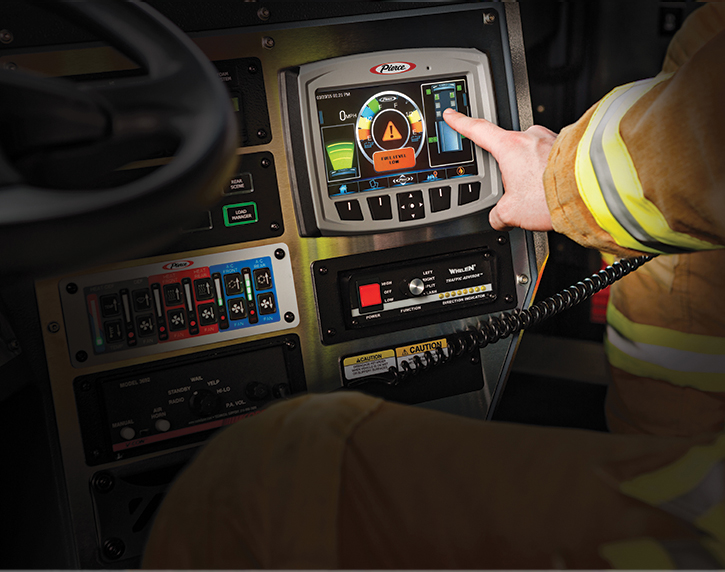

Live, in-person training is the best way to improve performance. Hands-on training is essential to maintain skills and improve capabilities.
While there are benefits to online education, there are limitations to what can be accomplished. The current circumstances created by the COVID-19 pandemic have mandated using more technology for a variety of things, including training and educating personnel. While it is hoped that the return to a more normal training and education program is right around the corner, there are some opportunities to benefit from online training, both while under restrictions for assembly but also to support more traditional training when circumstances allow.
Related Content
IDENTIFYING THE OPTIONS
There are many people who do not believe in the merits of some of the online training as there are some definite deficiencies and challenges. Regardless, this method of education is not going away and will remain as a vital component of a well-rounded training program long after the pandemic is over. As such, the fire service must learn as much as it can so its personnel can maximize the benefits without detracting from the other methods of delivery. The challenge will be to identify the areas where remote training is the only option and also a viable alternative to in-person training and education. There will be ways to coexist and maximize the use and ultimately improve performance across the board.
MEETINGS
Like social media, there is a learning curve with some of the technology that has to be addressed and also some perils that exist. Social media has led to the downfall of firefighters and officers. There may be some parallels. For example, many meetings and trainings are being conducted on Zoom or similar platforms. These are great tools to help overcome some of the restrictions placed on organizations by the pandemic. But everyone must realize that you still need to behave as if it were a live meeting. Because there are live pictures and audio, everything can be seen and heard unless you use various settings. I suggest that you not use video unless you are going to be speaking. Audio must be muted—not only to keep background noise out of the conversation but to also prevent inadvertent “editorial” comments. There already have been cases where people working from home, and maybe indulging in an adult beverage, have been heard disparaging others in the meeting. A poor slip in judgment can harm one’s career. Continually check the mute button to make sure it is set as it should be.
For those using various virtual methods, there are some protocols. As mentioned, knowing when to mute and remove your video is important. Background noise is very distracting. Only those speaking should have an open microphone. When it is your turn, be sure to speak clearly and with the proper volume and tone. Also, know if you have a way to “raise your hand.” Sometimes it is difficult to interject your comments. This is an area that will require upfront rules from the host.
Regarding video, have a decent background. Don’t have anything inappropriate showing. Also, even though you may not be meeting in person, dress appropriately. Most of the platforms have a way to blank out your screen. Know how to do it. If you are walking around, not paying attention, eating, drinking, or anything else that would indicate you are not all in the discussion, don’t use the video. If you are presenting or speaking, reengage the video. Just as with in-person meetings and trainings, don’t be a distraction and remember your manners.
TRAINING
Besides meetings, many organizations have transitioned to online training. There are some topics that lend themselves to this medium. But, there are other aspects of the job that require hands-on operations. Know the difference and don’t neglect regular and routine training that must be done off the computer. When using the computer, be aware of its limitations regarding attention spans and the ability to tune out the message. Remember, everyone has grown up seeing professionally presented video. Few, if any, fire departments have the resources to match this level of quality. Because of this, you need to be conscious of the length of any presentation. This also applies to meetings. Anyone who has participated in group calls, meetings, or training must admit there are times when they are distracted and are not paying attention to what is being said. Think of all the times you or someone has been asked to repeat what was said. This is probably an indication that someone was not devoting full attention.
THE POSITIVES
There are some positives to the online training and meeting options. Obviously, there is not much choice as to how to conduct meetings and training because lockdowns and quarantines are more of the normal than not. But, even when things return to a more normal environment (prepandemic), some of the advantages of these technologies will remain and need to become part of an overall approach. The technology allows people to get together who normally would not have the means to do so and allows more members of an organization to participate in training who would never have the opportunity for an in-person or live event. Members can also remain available for emergency response while still having the opportunity to learn and improve.
Maintaining all skills is very important. The only way to do this is through practice. There can be good opportunities to access information online and learn some of the latest and greatest advancements. It could be related to new products and possibly new techniques. Gaining the information via the Internet, regardless of how you obtain it, is only part of the work. It has to be demonstrated and standardized for the organization. Just watching or listening doesn’t necessarily work in this industry for some of the jobs required. There are exceptions where simulations can be of big help. Knowing the difference and making the right decision are important.
Technological advances have dramatically changed many things in the fire service. The COVID-19 pandemic has accelerated its use in some areas of the fire service. There is a need to recognize its benefits but also find balance. Not everything can be done online or with technology. The pandemic will end, and the benefits of technology will remain. But the “old” way of doing things will need to return to meet the needs of the organization. Use this time to find out what works well and what doesn’t. Find the balance so that your training is well-rounded and most beneficial in continuing to improve the performance of your department.
RICHARD MARINUCCI is the executive director of the Fire Department Safety Officers Association (FDSOA). He retired as chief of the Farmington Hills (MI) Fire Department in 2008, a position he had held since 1984. He is a Fire Apparatus & Emergency Equipment and Fire Engineering Editorial Advisory Board member, a past president of the International Association of Fire Chiefs (IAFC), and past chairman of the Commission on Chief Fire Officer Designation. In 1999, he served as acting chief operating officer of the U.S. Fire Administration for seven months. He has a master’s degree and three bachelor’s degrees in fire science and administration and has taught extensively.

